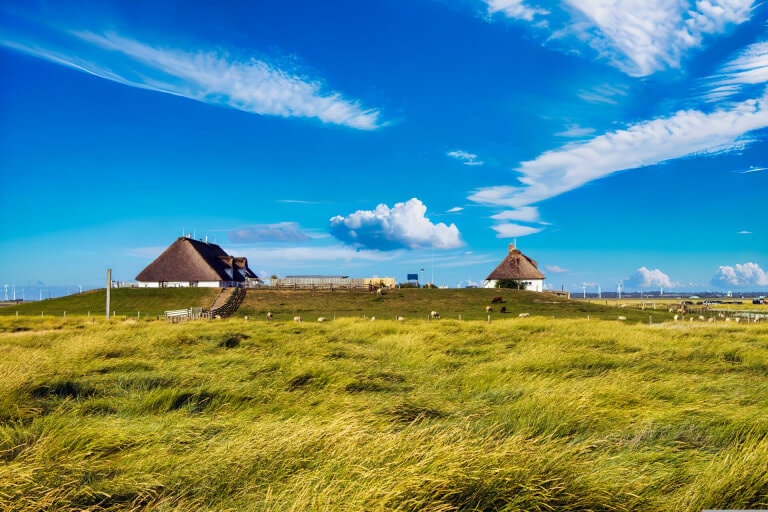The North Frisian Wadden Sea is a unique landscape with a special charm. Here, the tides shape the daily rhythm and create a constantly changing landscape. In the midst of this diverse ecosystem there are the Halligen - small, inhabited Islands, which are particularly threatened by the forces of nature. One of these Halligen is Habel, which is known for its special features and beauty.
The smallest Hallig in the North Frisian Wadden Sea
With a size of 6 hectares (according to other information 7.4 hectares) it is the smallest Hallig in the North Frisian Wadden Sea. Administratively, it belongs to the municipality of Gröde. Its length is about 655 meters and its maximum width is just over 100 meters. This may seem tiny, but Habel has a lot to offer.
The history of Habel
The history goes back many centuries. In the Middle Ages it was owned by the Danish king and then became part of the Duchy of Schleswig. In the 16th century the Hallig was heavily fought over by the Danes and the Dutch and in the following centuries it was mainly used for sheep breeding.
In the 19th century it experienced a great economic boom. The Hallig was used for agriculture and many new houses were built. The natural forces of the North Sea however, were always present, and was flooded again and again. In 1962, a severe storm surge caused great damage, and many houses had to be abandoned.
Life on Habel today
Today there are about 20 people living there, mainly from tourism and fishing. There are a few vacation apartments and a small restaurant where visitors can enjoy the unique atmosphere of the Hallig. However, the inhabitants also have to deal with the constant threat of floods and storms. Therefore, they have developed a special relationship with nature and have learned to live with its challenges.
The special features of Habel
Compared to the other Halligen, Habel is tiny, which creates a special atmosphere. It is easy to explore the Hallig on foot and visitors can enjoy the peace and beauty of this special place.
Another special feature is its bird life. The Hallig is a popular breeding ground for many bird species, such as redshank, lapwing and oystercatcher. Visitors can observe these birds up close and learn more about their behavior and habitat.
Not least known for its traditional houses. On the Hallig there are some well-preserved examples of Frisian houses that show the typical architecture of the region. These houses are built of mud and thatched roofs and have a cozy, rustic charm.
Mudflat walks prohibited!
You should definitely be aware of the dangers of North Sea and be aware of the tides. Mudflat walks to Habel are prohibited and also very dangerous because of the constantly changing tideways. The danger of sinking into the mudflats exists with every step. Therefore, it is recommended to visit Habel by boat or join a guided tour.





